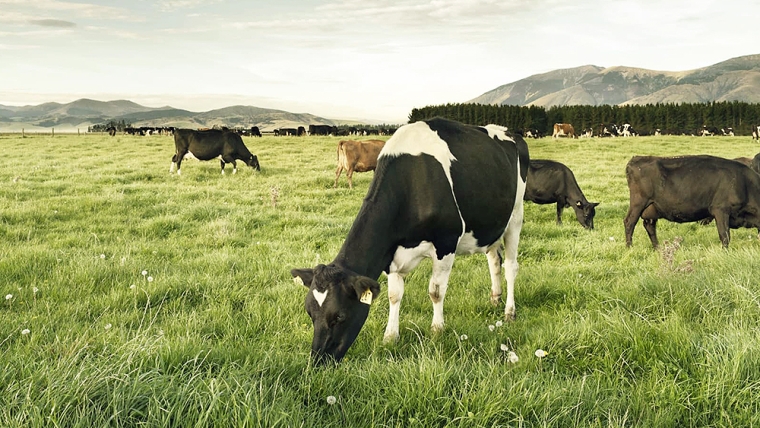
There are bright spots on the horizon for improved global dairy prices, but farmers around the world are not awash in profitability as margin challenges persist into the new year, according to a new report by food and agri banking specialist Rabobank.
In its Q1 2024 Global Dairy Quarterly: Finding a new equilibrium, Rabobank says dairy product price forecasts in most key regions indicate a better year following a challenging 2023, with improved margins sorely needed at the farmgate level.
“Milk supply growth continues to struggle, with the second half of 2023 seeing weaker year- over-year production from the key exporting regions,” report co-author, Rabobank senior agricultural analyst Emma Higgins said.
“A return to production expansion will take time though, and we forecast lower year-over- year output for the first two quarters of this year before volume turns positive into the second half of 2024, partially helped by easier-to-overcome comparable data points.”
After two consecutive quarters of weaker supply, the report says, a firmly bullish price response would generally materialise, similar to the output pullback in 2021 followed by, in some cases, record high prices into 2022. “But the supply and demand balance is different this time,” Ms Higgins said, “with lower milk production relatively neutralised by sluggish global demand in recent months.”
Looking ahead, Ms Higgins said, there is increasing evidence that dairy demand is on the upswing. “The recessionary fears prevalent among many countries throughout 2023 have largely passed and, while last week’s Global Dairy Trade auction did produce a weaker overall result, this followed six consecutive events with positive price movements,” she said.
“We’ve also seen positive developments in China with retail and food service sales showing strength through the Lunar New Year."
“Slowing milk production growth in China means we expect imports to improve in 2024, even if they remain lower than the long-term average.” Ms Higgins said the bank’s expectation is that slow but steady dairy commodity price gains will materialise this year.
“And accordingly, we’ve now made a small upwards revision to our New Zealand milk price forecast for the 2023/24 season, increasing this by five cents to $7.80kg/MS.”
What to watch
The report identifies several key watch factors for the sector in 2024, including upcoming elections in many key dairy regions. “European parliament elections are approaching in June while Americans will go to the polls to elect a new president and many members of Congress in November,” Ms Higgins said. “Any leadership shifts could mean new approaches to policy, including free trade agreements, sustainability policies, or nutrition priorities that trickle back to impact dairy prices.”
Sector participants will also be keeping a close eye on developments in the Dutch and Irish dairy sectors where farmers are facing lower nitrogen derogation limits that will decrease application rates of organic nitrogen from animal manure in the 2024 season and beyond.
“This will reduce carrying capacity per hectare, which could result in farmers re-balancing their herd size and/or higher costs for manure disposal,” Ms Higgins said.
“And it’s not just the Netherlands and Ireland dealing with this challenge, with Denmark's derogation allowance also up for renewal in July 2024.”
Other watch factors identified in the report include geopolitical conflict, weather patterns and feed costs.
New Zealand update
The report says Fonterra’s forecast milk price for the 2023/24 season has improved since the last quarterly, lifting by four per cent from NZD 7.50/kgMS to NZD 7.80/kgMS – a 16 per cent gain on the lowest farmgate forecast announced earlier in the season.
“Despite this, there is some lingering financial pressure due to production issues with summer heat and water availability in some parts,” Ms Higgins said. “With most farmers having finished their pregnancy testing, there is an opportunity to cull and rebalance feed budgets. Fortunately, above average quantities of supplementary feed harvested in the first half of the season will help going into autumn.”
Ms Higgins said New Zealand milk production has held up much stronger than earlier anticipated.
“On a tonnage basis, a ‘non-traditional El Nino’ has seen milk supply running just 0.5 per cent lower compared to last season for the eight months to January 2024,” she said. “Yet milk solids collections are higher than the previous year by 0.8 per cent over the same period, driven by a solid South Island performance. We anticipate milk production to decrease by 0.7 per cent on a tonnage basis for the full 2023/24 year."
The new 2024/25 season is expected to get off to a better start, simply on the assumption of poor comparables and improved weather.
The report says export volumes for the three months to January 2024 were up seven per cent (69,000 tonnes) on the prior year. “This is higher than the rate of milk production over the same period and reflects weaker exports in 2022, along with clearing inventory at cheaper prices,” Ms Higgins said.
“New Zealand exported year-on-year five per cent more product to China over the three months to January 2024 with exports of WMP and SMP jumping over 20 per cent for January 2024 compared to last year.
“Other destinations lifting their appetite for New Zealand dairy over this period included the Middle East (Saudi Arabia and the UAE) and South-East Asia (Malaysia, Thailand and Indonesia).”
The report says New Zealand halted exports of heifers and cattle by sea in April 2023, however, this topic appears back up for discussion under the new coalition government.
We welcome your comments below. If you are not already registered, please register to comment
Remember we welcome robust, respectful and insightful debate. We don't welcome abusive or defamatory comments and will de-register those repeatedly making such comments. Our current comment policy is here.